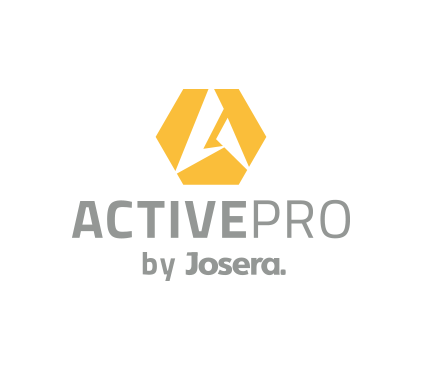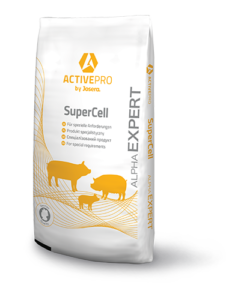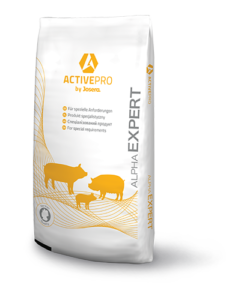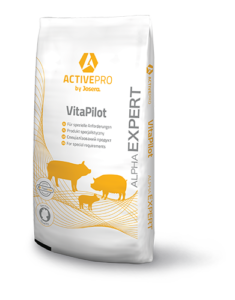Lay the foundation now for a successful start in piglet rearing!
Healthy piglets are essential for successful piglet rearing. The following article provides a lot of information about feeding. Just take a look and learn about valuable tips & tricks.
The basics of piglet feeding
The cornerstone for successful piglet rearing and thus for homogenous, fast-growing and vital piglets is the trouble-free development of piglets already in the suckling phase. The weaning phase, in which milk, the previous main source of feed for piglets, has been eliminated, is of central importance for the piglets. From this point on, piglets must be able to take in and digest optimal amounts of solid feed.
🏁🐷 The aim of good piglet feeding is to give piglets optimal preparation for the difficult period during the change in feed: This includes both learning how to eat food and training the digestive tract.
Feeding during piglet rearing can be divided into four phases in which the feed can be individually adapted to suit the needs of the piglets. A change of the feed line is possible at any stage, depending on the farm’s specific objectives.
| ActivePro Product Overview | |||
|---|---|---|---|
| Active | Efficient | Safe | |
| Phase 1 | PiggiMil / Premiumstart | ||
| Phase 2 | Active 2-100 (floury) | Efficient 2-100 (Crumbly) | Active 2-100 / Efficient 2-100* |
| Phase 3 | Active 3-50 (Crumbly) | Efficient 3-40 (Crumbly) | Safe 3-100 (Crumbly) |
| Phase 4 | FerkelProfi, FerkelStar, Ferkel NP | ||
*depending on feed intake
Phase 1 – Milk drink for piglets
Over the years, breeding progress in modern sow management has developed with an eye to fertility and litter size. In order to ensure optimal rearing with a litter size of 16-20 piglets born alive, which is not unusual today, options for supplementary feeding are required. Nature reaches its limits with such litter sizes meaning an average of 15 teats in the sow, as it is precisely the rear teats that produce less milk and these are often only reached by the weakest piglets.
The result: higher losses and unequal groups. Future-oriented farms are therefore forced to react and thus rely on high-quality milk replacers.
By using of a high-quality milk replacer …
- losses of suckling pigs can be reduced
- the piglets are more vital and the litters more uniform
- the piglet can already train its feed intake at the trough within the first few days
- the lower birth weights of larger litters can catch up more quickly
However, milk replacer not only has a positive effect on the development of the piglets – the sow also benefits. With high piglet numbers, the sow is not so strongly suckled at weaning due to the use of milk replacer and is therefore better equipped for the following pregnancy.
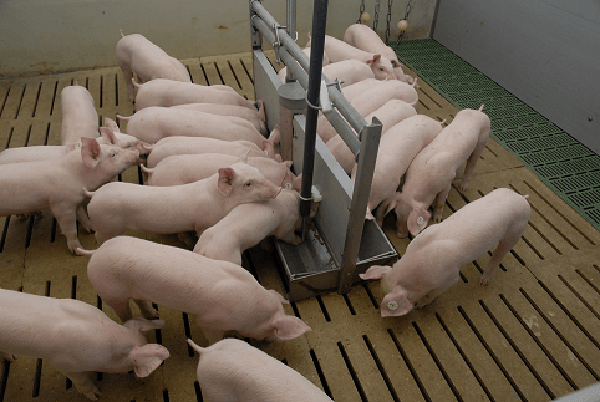
In order to minimise the amount of work involved in feeding a milk replacer, more and more farms are opting for automatic supplementary feeding of suckling pigs. This is often solved by a cup system. Here the milk replacer is mixed by an automatic machine and then distributed to the respective pens via pipes. Due to its excellent solubility, Piggimil is ideally suited for such an impregnation system, as there is no phase separation in the pipelines.
Premiumstart offers another possibility: the high proportion of milk components ensures a high level of acceptance among young suckling pigs. Premiumstart can be used in a variety of ways, both liquid and pulpy, in separate bowls. For less work and improved hygiene, the dry form of feeding with Premiumstart is also associated with high feed intake.
Are you interested in Piggimil? Take a look here and learn more about the product.
Phase 2 – Supplementary feeding with sow’s milk
Whether in the form of flour or crumbs, ActivePro Prestarter, with its tasty composition, makes an important contribution to promoting feed intake in this early phase and to getting the piglets accustomed to solid feed intake.
Sufficient supplementary feed intake in the farrowing pen is crucial, as this is the only way to train the digestive enzymes and thus ensure stable feed intake and digestion after weaning. The following reference values give an indication of the supplementary feed intake during the suckling period:
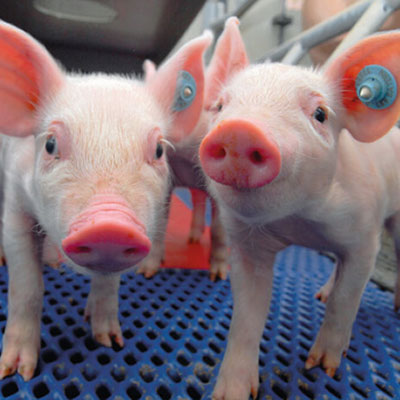
| Orientation values for feed intake during the entire suckling period in grams per animal | |||||
|---|---|---|---|---|---|
| 3-week suckling period | 4-week suckling period | ||||
| T | Min. | Opt. | T | Min. | Opt. |
| 2-21 | 200g | 400g | 2-28 | 400g | 800g |
In terms of the first solid feed for piglets, the composition of the feed is not only crucial for palatability but also for the development of the digestive tract:
- Although milk components are tasty and easily digestible for the piglet, they are of little use in preparing for weaning and developing the digestive tract for a a grain-soya mixture.
- Breakdown grains promote palatability, but to improve starch digestibility, the matter of which cereals are present in broken down form is decisive. There are big differences in terms of the digestibility of the different grains.
Phase 3 – transition from milk to solid feed
At the time of weaning, the piglets’ digestive tract is not yet fully developed and is therefore very sensitive.
Insufficient stomach acid production and reduced enzyme activity can lead to digestive disorders. That is why the promotion of the digestive tract and intestinal health is a particular focus of ActivePro weaning feeds.
The ActivePro weaning feeds are characterised by the following features:
- Highly digestible starch and protein sources
- Low crude protein and calcium carbonate contents
- Optimal acid equipment for a low acid binding capacity
- High content of dietary fibres
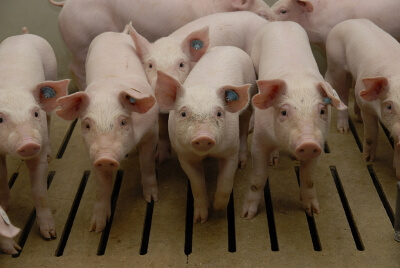
All these properties ensure a high level of gastrointestinal health and promote the optimal development of the digestive tract.
💡🧐 The third phase is the transition phase from milk to solid feed. This phase is started a few days before or after weaning. Here the focus is mainly on stabilising and promoting the development of the digestive tract.
👉ActivePro weaning feed in phase 3:
Phase 4 – Mineral feed for piglets
If the digestive tract of the piglets is optimally prepared for weaning by early supplementary feeding, nothing more stands in the way of carefree piglet rearing.
The farm’s own mixture offers you a high degree of flexibility in the mixture design. With the ActivePro piglet mineral feeds that follow the weaning feed, you can now fully exploit the performance level of the piglets.
💡🧐 Mineral feed should offer an optimal supplement to the farm’s own mixture of grains and soya meal. It can be fed when a piglet has reached a live weight of approx. 12 kg.
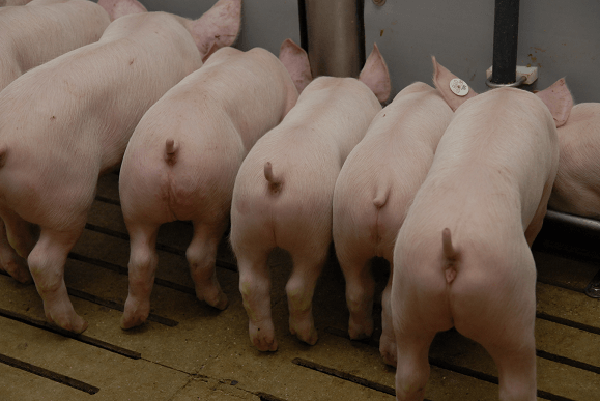
Further factors for successful piglet rearing
Crude fibre as a guarantee of success
Piglet producers first glance usually goes to at the energy and protein configuration. For successful piglet rearing, crude fibre plays an important role as a component.
In terms of crude fibre, a distinction is made between soluble (e.g. pectins, oligofructose) and insoluble fibres (e.g. cellulose, lignin). The insoluble fibres are needed for improved intestinal peristalsis. This increases the passage rate of the feed in the digestive tract, which enables the piglet to take up feed more quickly. The soluble fibres serve as a food source for the desired colon bacteria. These produce short-chain fatty acids (e.g. butyrate, acetate), which are used as energy for the intestinal villi, lower the pH value and have an anti-inflammatory effect. It is precisely around the weaning period that the animals experience stress, to which the intestine, as an important immune organ, reacts sensitively and intestinal activity is restricted.
However, as mentioned above, a functioning intestinal peristalsis is important for the passage rate of the feed and is thus crucial for feed intake. If excrement remains in the intestine for too long because nothing follows, it hardens and thus damages the intestinal wall. Toxins enter the animal through the damaged intestinal wall, and this results in diarrhoea and a subsequent loss of growth.
In the stomach, the crude fibre stimulates the cells that produce hydrochloric acid, which ensures increased secretion of digestive acid. This improves the absorption of nutrients, which in turn has a positive effect on daily weight gain.
The crude fibre also increases the volume of the feed pulp, which in turn expands the stomach. On the one hand, this ensures satisfied piglets because they are full, on the other hand a larger stomach can hold more feed, which in turn has a positive effect on the feed intake.
In summary, crude fibre in the feed makes an important contribution to successful piglet rearing. The combination of insoluble and soluble fibres in our piglet products brings calm and well-grown piglets, especially around the weaning period.
👉 Are you looking for a suitable product with a high crude fibre content? SuperCell is the ideal crude fibre supplement. Read more about the product here.
Acids in piglet feed
In animal nutrition, organic acids are added to feed for various reasons.
Some acids have a positive effect on feed acceptance, others lower the pH value of the feed as well as the stomach, while other acids even have a direct effect on harmful germs in the stomach and small intestine.
Table 1: Overview of acids and their effects:

Acids play an important role especially in piglet feeding: When feeding the piglets under the sow, acceptance of the feed is crucial. Lactic acid and citric acid contribute to the palatability of the pre-starter.
At the time of weaning, the piglets’ digestive tract is not yet fully mature. Therefore, the hydrochloric acid formation in the stomach of weaned piglets works only to a very limited extent. However, the hydrochloric acid ensures that the pH value in the stomach remains low. The enzymes that digest the feed protein can only work at low pH values. If the protein is not broken down by the enzymes in the stomach, it reaches the small intestine and serves as a food source for E. Coli, for example. As a result, diarrhoea occurs.
The use of pH-lowering acids supports the young piglet’s digestion and thus prevents diarrhoea caused by undigested protein.
When designing our piglet products for the Active, Efficient and Safe lines, we have therefore paid special attention to the acidity of these products and have decided to use a mixture of different acids, as each acid has specific effects (see Table 2).
Table 2: Acids contained in piglet production
| Product | Acid obtained |
|---|---|
| Active 2-100 Efficient 2-100 |
Citric acid, Lactic acid, Sorbic acid and Calcium formiate (Salt of formic acid) |
| Active 3-50 Efficient 3-40 |
Benzoic acid, Citric acid, Calcium formiate |
| Safe 3-100 | Benzoic acid, Citric acid, Lactic acid, Sorbic acid and Calcium formiate |
In over 50 customer surveys, the test farms confirmed very good compatibility and safety relating of our weaning feeds. For farms dealing with persistent diarrhoea problems, we recommend our safety product Safe 3-100. This is characterised by a particularly extensive acid package and thus helps to contain diarrhoea even more effectively than Efficient 3-40.
Acids in feed therefore make an important contribution to piglet feeding, both in terms of palatability and animal health.
For an additional acid supply for piglet rearing, we also recommend the product TriplexS –> Learn more here.
Stress-free weaning
The time of weaning from the sow represents an enormous cut in the life of the piglet, which is accompanied by a high degree of stress for the animal.
On the one hand, the separation from the dam and regrouping with the resulting rank fights cause social stress for the young piglet. By moving to another pen or barn including transport, the weaned piglet has to adapt quickly to a new, unknown environment. In addition, the main feed, the sow’s milk, is dropped from one moment to the next and the piglet is completely dependent on solid feed. The enzyme activity for digestion of this feed, which is rich in starch and plant proteins, is not yet optimal at weaning, nor is the production of stomach acid, which can lead to difficulties in digestion. In addition, weaning is often at a stage when passive immunity decreases and active immunity is not yet fully developed: the so-called “immunity gap”. Here the animal is more susceptible to diseases.
In order to survive this difficult time, intensive and early preparation from the feeding side is important. The piglet has to learn already in the farrowing pen to take in sufficient solid feed and the enzyme activity is stimulated by this as well.
In addition, the use of special feeds such as VitaPilot with the active agent package FlavoVital® can reduce further harmful influences and effects. The active agent package FlavoVital® with selected secondary plant ingredients strengthens the body’s defences during periods of stress and the special combination of pre- and probiotics keeps the gastrointestinal tract stable. The piglet is thus optimally helped through the weaning phase, which is challenging in every respect, and the way is paved for successful piglet rearing.
How do I achieve high gains as a farmer?
The goal of successful piglet breeders is to sell the piglets of a farrowing group with as few losses as possible at an age of 70 days and a live weight of 28 kg.
To achieve this goal, gainsof more than 400 g are required. Gains of this magnitude can only be achieved if the piglets start eating very early and feed intake is always consistently high. They must also remain healthy throughout the rearing period, because only a healthy animal will eat and gain weight.
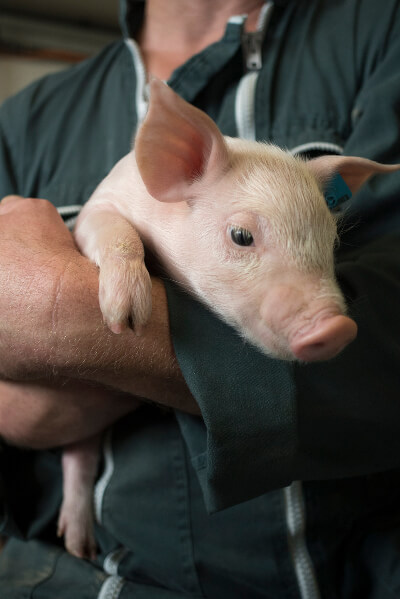
Feed concepts in practice
Depending on the genetics, management and current health status of your animals, the requirements for feed and feeding vary greatly. The ActivePro piglet feed concept consists of different feeding strategies and thus offers an individual and adequate feeding strategy for each farm:
AlphaPLUS Active: generates a high feed intake and high gains
Alpha Efficient: maintains a good feed intake and good gains
AlphaPLUS Safe: helps with diarrhoea problems during the weaning phase
| Goals | Active | Efficient | Safe |
|---|---|---|---|
| Feed intake | ++++ | +++ | + |
| Growth | ++++ | +++ | ++ |
| Intestine health | + | +++ | ++++ |
Feeding during piglet rearing can be divided into four phases in which the feed can be individually adapted to suit the needs of the piglets. A change of the feed line is possible at any stage, depending on the farm’s specific objectives.
